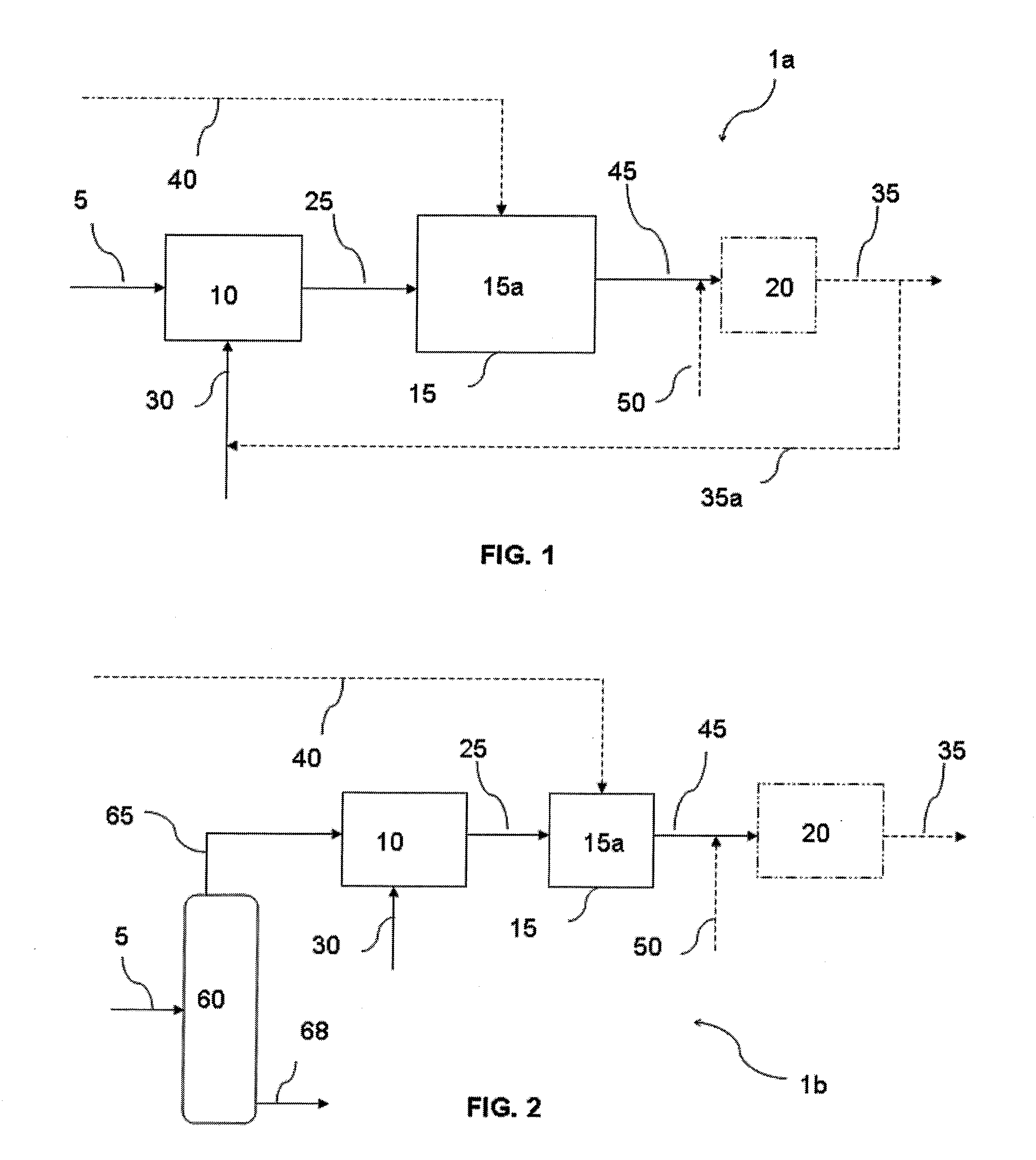Conversion of produced oxygenates to hydrogen or synthesis gas in a carbon-to-liquids process
a technology of carbon-to-liquids and oxygenates, which is applied in the direction of hydrocarbon oil cracking, organic chemistry, and oxygen-containing compound preparation, etc., can solve the problems of high cost of fuel produced from non-petroleum sources, and high cost of coal hydrogen production
- Summary
- Abstract
- Description
- Claims
- Application Information
AI Technical Summary
Benefits of technology
Problems solved by technology
Method used
Image
Examples
Embodiment Construction
[0074]Herein will be described in detail, specific embodiments of the present invention, with the understanding that the present disclosure is to be considered an exemplification of the principles of the invention, and is not intended to limit the invention to that illustrated and described herein. The present invention is susceptible to embodiments of different forms or order and should not be interpreted to be limited to the specifically expressed processes or systems or applications contained herein. In particular, various embodiments of the present invention provide a number of different combinations of features to generate hydrogen and optionally carbon monoxide or carbon dioxide, and to further generate synthetic hydrocarbons, water and oxygenates.
[0075]The ‘oxygenated organic compounds’ and ‘oxygenates’ are used interchangeably throughout the specification and are meant to represent oxygen-containing organic products which are made in a CTL process, and particularly made in a...
PUM
| Property | Measurement | Unit |
|---|---|---|
| Temperature | aaaaa | aaaaa |
Abstract
Description
Claims
Application Information
 Login to View More
Login to View More - R&D
- Intellectual Property
- Life Sciences
- Materials
- Tech Scout
- Unparalleled Data Quality
- Higher Quality Content
- 60% Fewer Hallucinations
Browse by: Latest US Patents, China's latest patents, Technical Efficacy Thesaurus, Application Domain, Technology Topic, Popular Technical Reports.
© 2025 PatSnap. All rights reserved.Legal|Privacy policy|Modern Slavery Act Transparency Statement|Sitemap|About US| Contact US: help@patsnap.com



